Microwave Chemical Co. has applied its microwave heating technology to carbon fiber production, reportedly cutting energy use by 50% and CO2 emissions by 90%. Photo Credit: MWCC
Microwave Chemical Co. (MWCC, Osaka, Japan) was founded in 2007. It currently has 60 employees, and its mission is to innovate the chemical industry and revolutionize manufacturing using its microwave technology to “create a world we have never seen.”
Microwave Chemical Co. (MWCC) has demonstrated and commercialized its microwave technology with the world’s top chemical companies — e.g., BASF (#1), Mitsubishi Chemical (#11), Sumitomo Chemical (#19), Mitsui Chemicals (#29) — as well as companies pioneering sustainable materials (e.g., Taiyo Kagaku Co., Futamura Chemical) and PeptiStar, which produces peptide-pharmaceuticals used to treat cancer, diabetes, HIV and other immune diseases. Photo Credit: Microwave Chemical Co.
Over the past 15 years, MWCC has worked with the world’s top chemical companies and pioneers in sustainable materials and processes to prove that its microwave technology reduces energy use by up to 70%, heating time by up to 90% and equipment footprint by up to 80% compared to current fossil fuel-based industrial systems.
In November 2022, MWCC announced that its microwave-based Carbon-MX technology would be demonstrated in a pilot production line for the manufacture of eco-friendly carbon fiber. This demonstration facility will be built by December 2023 within partner Mitsui Chemicals’ (Tokyo, Japan) Nagoya Works facility.
The need for green carbon fiber
The development of Carbon-MX is indeed timely. As explained by James Trevarthen, senior composites engineer at Dowty Propellers (Gloucester, U.K.) in CW’s 2022 tour article, “The production of carbon fiber is overwhelmingly the largest energy consumption step in our products overall. We’re working with our suppliers, including Teijin [Tokyo, Japan], to minimize the environmental impact of our carbon fiber as much as possible.”
Cited in a 2019 CW article on recycled carbon fiber, a life cycle analysis (LCA) study conducted by Fraunhofer Institute for Environmental, Safety and Energy Technology (UMSICHT, Oberhausen, Germany) found that production of one metric ton of carbon fiber emits 29.45 metric tons of CO2.
This issue was emphasized even further during a recent interview with Morten Holum, CEO of Hexagon Purus (Oslo, Norway), a producer of carbon fiber composite pressure vessels used to store hydrogen: “Carbon fiber must be produced more sustainably. We all have ESG [environmental, social, governance] requirements and we, as a clean energy solutions company, are committed to being as sustainable as possible. In our products, carbon fiber is the most challenging component for energy and emissions reduction. As carbon fiber consumers, we need a product with significantly lower carbon intensity [CO2 emissions] and more sustainable precursors. The manufacturers also need to develop a lower cost method of manufacturing. All carbon fiber manufacturers will increasingly feel this pressure to be more sustainable because it is a global imperative.”
The history of Microwave Chemical Co.
(Note: This section is summarized from “Using microwave technology to create a world we have never seen” on the Osaka Startup Portal.) Iwao Yoshino is the CEO and founder of Microwave Chemical Co. Born in Osaka, Yoshino was hired by Mitsui & Co. after college. He was assigned to the Chemicals Division, where he worked mainly in petrochemical products trading. He later left Mitsui and obtained an MBA at the University of California, Berkeley in the U.S. Situated close to Silicon Valley, Yoshino saw how venture companies made a global impact by commercializing new technology.
After receiving his MBA, Yoshino worked for a Seattle firm that supported environmental and energy startups. From these experiences, he began to form a strategy to impact global energy and environmental issues through business-based solutions.
Yoshino returned to Japan, and in 2006, met Yasunori Tsukahara, a microwave researcher at Osaka University’s Graduate School of Engineering. They co-founded MWCC in 2007 to produce biodiesel from waste oil at chemical and food plants. However, in such a conservative industry, applying new technology such as microwave processing was not readily accepted. MWCC realized it would have to build its own microwave chemical plant to demonstrate that the technology worked. The company did this in 2014 and was able to increase project partners.
After 15 years, MWCC completed a successful IPO on the Growth Market of the Tokyo Stock Exchange in June 2022. “Electric-powered manufacturing and mobility is said to be the key to carbon neutrality,” says Yoshino. “With our company’s microwave technology platform now mature, it is important that we grow in order to build businesses that contribute these solutions to the world’s environmental and energy problems.”
Alternative heating, carbon fiber production lines
The potential for microwave heating in carbon fiber manufacture is not new. In 2014, CW reported on UHT Unitech’s (Zhongli, Taiwan) microwave technology to produce T800- or T1000-grade fiber with 30% less energy, 50% less process time and 15-30% lower cost versus conventional processes.
What is a conventional carbon fiber process? Per CW’s 2008 primer on carbon fiber manufacture, and other sources, the process begins with PAN (polyacrylonitrile) precursor that is first stabilized in an oxygen-rich environment — 30-120 minutes is typical for oxidation at 200-300°C. Subsequent carbonization can take as long as 30-40 minutes, but most newer production lines require only several minutes for the fiber to move through a low-temperature (700-800°C) and then high-temperature (1200-1500°C) oven/furnace, both filled with inert gas (e.g., nitrogen). A typical production line can use 4-6 ovens. Control of exotherm, temperature, tension and other parameters is key to ensure a high-quality carbon fiber with the desired tensile modulus, strength and failure strain. (Also see CW’s 2020 tour of Hexcel’s carbon fiber production facilities.).
Plasma chemistry is another energy-reducing alternative for carbon fiber manufacture. While plasma is typically assumed to be very hot, such as in a star, there is also cold plasma, which can operate at room temperature. It is this kind of plasma that 4M Carbon Fiber (Knoxville, Tenn., U.S.) utilizes in its plasma oxidation technology that 4M reports can save up to 75% of energy consumption (kWh/kg of fiber) compared to traditional hot air oxidation and increase throughput by 300%, aided by proprietary enhanced chemistry and novel hardware and process design. In 2020, CW reported that Saudi Aramco Technologies Company (Dhahran, Saudi Arabia) would pursue research including microwave and plasma heating as well as novel precursors aimed at a 50% reduction in carbon fiber manufacturing cost.
Deakin University’s (Geelong, Australia) patented technology — licensed by LeMond Carbon (Oak Ridge, Tenn., U.S.) — also achieves rapid oxidation, but not through microwave or plasma heating. Instead, it adds a 1- to 2-minute oxygen-free precursor pre-stabilization phase that can reduce subsequent oxidation/stabilization to as little as 15 minutes, followed by a 3-minute carbonization. Such short oxidation times have been confirmed in a third-party audit of Deakin’s pilot line for 24K fiber with properties comparable to Toray (Tokyo, Japan) T300 fiber — 273-gigapascal tensile modulus, 3.5-gigapascal tensile strength and 1.5% strain at failure. Those properties don’t quite reach those of Toray T700S standard modulus 12K fiber — the benchmark for pressure vessels and some aerospace applications. To be more precise, the Deakin University fiber exceeds T700S modulus (273 versus 230 gigapascals) but falls short of the 4.9-gigapascal tensile strength and 2.1% strain at failure. However, Deakin University and LeMond Carbon claim 75% reduction in capex and 70% reduced energy consumption per kilogram of output fiber. For applications driven by modulus and not requiring such high tensile strength, this is well worth pursuing.
Carbon-MX microwave technology
“We use microwave heating for both the oxidation and carbonization processes,” says Iawo Yoshino, CEO of MWCC. “Using our Carbon-MX technology requires new carbon fiber manufacturing equipment, but its energy usage is roughly 50% compared to conventional carbon fiber production lines with much smaller physical footprint. The capex is also much smaller.”
“We have already demonstrated this method of carbon fiber production at lab scale and in a first pilot line at our facility,” says Yoshino. “Now, we are working with Mitsui Chemicals to install a larger, phase 2 pilot line at their facilities.” This demonstration production line will cost 2 billion yen (14 million euros). MWCC cannot disclose its capacity at this time.
Note, this cost is almost 20% less than the carbon fiber pilot line built by Leonardo (Rome, Italy) and MAE (Fiorenzuola, Italy), a specialist in production lines for PAN precursor. Located in Piacenza, Italy, this 17-million-euro, conventional production line was scheduled to begin production in 2Q 2022 with an estimated annual capacity of 30 metric tons of PAN precursor and 12.5 metric tons of carbon fiber, based on operating 250 days/year.
In contrast, the current leader in carbon fiber production, Toray (Tokyo, Japan) announced in November 2022 that its European division would invest 100 million euros to build a new 1,000 ton/year carbon fiber production line at its plant in Lacq, France. Construction of a new 200 x 30-meter hall is scheduled to begin in mid-2023 with production starting two years later, which is typical timing for new carbon fiber production to come online. What if this facility only required 1/5 of that space and emitted 90% less CO2?
How does microwave heating work?
A microwave is a low energy electromagnetic wave with a wavelength in the range 0.001 – 0.3 meter and a frequency between 1,000 – 300,000 megahertz. Laboratory and household equipment typically use microwaves at 2450 megahertz (12.2-centimeter wavelength).
Like all electromagnetic waves, microwaves travel at the speed of light and comprise two perpendicular oscillating fields: an electric field and a magnetic field. Microwave heating is primarily due to the electric field through dipolar rotation (molecules rotate back and forth) and ionic conduction (free ions move through space) as dipoles and ions try to align with the oscillating field. Friction from the rotating molecules and moving ions generates heat. The more polar and/or ionic (electrically conductive) a material is, the more efficient the rate of heat generation from microwaves.
Photo Credit: “Microwave heating mechanism and theory”, CEM.com)
Note, dielectric analysis (DEA) sensors measure these behaviors and are used to monitor resin cure and other processes. For more information, see the Dielectric Sensors page within CW’s Knowledge Center: “Sensors for Composites Processing”. An electromagnetic sensor called Collo also measures the main dielectric properties of permittivity and ion viscosity.
Direct vs. indirect heating
Because microwaves interact directly with a material’s molecules, energy transfer occurs more efficiently than with conventional heating techniques. Conventional heating typically involves a furnace or heated fluid (oil, water, air) to transfer heat to a material by conduction and/or convection.
Microwave heating is a direct vs. indirect process — instead of heating the reaction vessel, the material molecules are heated. This process is much faster than conventional heating and production line equipment remains much cooler, which is safer. Photo Credit: Microwave Chemical Co.
This is a slow and inefficient method, where differing thermal conductivities complicate temperature control and lengthen the time to reach thermal equilibrium. The latter is one reason most prepreg cure cycles include long dwell times.
“Using microwave energy means that you no longer rely on heating a 2D surface and then transfer that energy through conduction or convection,” says Yoshino. “We turn 2D heating into 3D heating by putting microwave energy directly into each molecule.”
Thus, materials are heated directly via microwave absorption without heating the entire furnace or fluid bath, which saves time and energy. Like induction, microwave heating can also heat materials throughout their volume. This rapid, almost immediate, volumetric heating — if kept uniform — can enable a higher chemical yield with lower energy usage.
Benefits of microwave heating as observed in production of fatty acid esters in pilot plant, Osaka, Japan with large chemical company partner. Photo Credit: Microwave Chemical Co.
Though the appeal of induction and microwave heating are similar, the processes are quite different. Induction is considered an indirect process because it uses an electromagnetic field to induce eddy currents in a conductive or semiconductive material which then generate heat. Microwaves directly create kinetic motion in molecules to generate heat. Another difference is that microwaves can also be used to reach freezing temperatures — down to -100°C — and are already being used in industrial freezing and freeze-drying processes.
Key to energy transition, challenges
Microwave heating is recognized as an important tool in the global transition from fossil fuels to renewable electricity, as explained in a special issue of the journal Processes, “Microwave Heating and Chemistry”, published by MDPI in 2020:
Unlike the conventional heating method using heat transfer, microwave heating enables material-selective and rapid heating and is expected as a key technology to achieve electrified and energy-efficient industrial processes. For example, microwaves have already been put to practical use in industrial processes such as food processing, rubber vulcanization, drying, and extraction. … microwaves can be also applied to a broader range of chemical processes including material processing, fine-chemical syntheses (electronic materials and pharmaceuticals) and bulk chemical production in the near future.
Though microwave processes have been used industrially since the 1970s, “worldwide sales of industrial microwave heating systems probably amount to less than $100 million, while sales of microwave ovens for the home are between $1.5 to $2 billion,” says drying expert Arun S. Mujumdar in the 2012 article, “Advantages of using microwave energy for process heating“. He reasons that microwave heating mechanisms are not familiar to most engineers, thus they represent a radical departure from conventional systems, “and there is generally a tendency to resist real innovation in most industries.”
Challenges, design of microwave heating. Challenges in microwave heating include measurement and control of the microwaves in the process/reactor. MWCC has developed material databases and physics-based simulation to understand the behavior of the microwaves and materials being heated . Photo Credit: Microwave Chemical Co.
There are other issues. “Because microwaves are waves,” says Yoshino, “they are difficult to control. The popular thought in industry is that microwave technology cannot be scaled up from a lab system.”
Designing a microwave heating production line also involves multiple, interrelated variables, such as design of the microwave-producing magnetron (see “Magnetrons” by Chris Woodford) and design of the process vessel/reactor, as well as control of microwave absorption and reflection in the material(s) being heated.
Electromagnetic periodic table + simulation. These are two of the tools within MWCC’s advanced technology approach that allows it to overcome the historical challenges with designing microwave heating/cooling processes for industrial-scale applications. Photo Credit: Microwave Chemical Co.
Materials database, physics-based simulation
So how has MWCC overcome these challenges? “We have developed a database that includes microwave absorption rates for each molecule,” says Yoshino. He discusses a kind of periodic table, based not on chemical characteristics but instead on physics — specifically electromagnetic and dielectric properties.
Target the catalyst, raw material or solvent. MWCC uses a database of electromagnetic and dielectric behavior of different molecules in its physics-based simulation of microwave heating processes. Note, ε’ represents the real number part of permittivity, which is a complex number and dielectric property. Photo Credit: Microwave Chemical Co.
“Microwaves are electromagnetic,” explains Yoshino. “Each molecule has a unique absorption rate that differs by electromagnetic wavelength and that also changes with temperature. We use this information to then complete simulations. We design the chemical reaction so that we can beam microwave energy into that specific material.”
“We also use this information to design the reactor,” says Yoshino. “Normally, for industrial chemical processes, you heat the whole reactor vessel. But we design the reactor so that we can select what we heat. For example, we can target the reactant, the solvent or the catalyst. Using these techniques, we can control the reaction.”
“This method requires a lot of computer analysis and simulation,” he continues. “We have a supercomputer to do this simulation and that helps us to define the best energy distribution for each material and process we are working with. We are completing not only electromagnetic behavior simulation but coupling that with fluid analysis simulation.”
Is this why have past attempts to use microwave heating for carbon fiber production failed? “We have heard that certain carbon fiber companies could only use the microwave heating process in the lab and could not scale it effectively to an industrial system,” says Yoshino. “I can understand this because control of the process when using microwave heating is very difficult. You need a physics approach and simulation to develop the control. I’m not sure how many chemical companies have this background.”
Achieving uniform microwave heating. MWCC used precise control of microwave irradiation conditions A through D to achieve uniform heating of a challenging material for an industrial process. Photo Credit: Microwave Chemical Co.
Note that simulation is also being used to understand and control induction welding of thermoplastic composites (see “Welding thermoplastic composites” section: Moving from fabric to UD tape). Though difficult, Yoshino says the control of direct microwave heating is better than with indirect induction heating. “We are directly putting energy into the molecules,” he reiterates. “We control this energy input as well as the temperature, which allows us, for example, to precisely oxidize and carbonize PAN precursor with the process control required for high-quality carbon fiber.”
Future processes, demonstrators
MWCC has a broad target of applications that could benefit from its technology: chemical recycling of plastics, recycling by pyrolysis, refining of rare earth metals for batteries, production of hydrogen from methane and production of carbon-based nanomaterials like graphene.
The company is specifically targeting sustainability and high-growth applications. To pursue these, MWCC has developed an infrastructure that includes testing labs and a large-scale processing plant that provides a demonstrator platform at its headquarters in Osaka. It has also built an interdisciplinary team of experts to support customers from design/proof of concept through verification, demonstration, scale-up, commercial installation and manufacturing.
MWCC has a growing pipeline of applications — it has completed or is pursuing 85 projects with 56 companies. PlaWave is a microwave-based plastic decomposition technology being developed with Mitsui Chemicals for chemical recycling of polyurethane foam in household goods and vehicles. The goal is to achieve a 70% reduction in energy usage while increasing decomposition speed by 200%. Small-scale demonstration is planned for 2023, with larger-scale demonstration in 2024 and commercialization targeted for 2026.
MWCC is also working on producing hydrogen from methane with Sumitomo Chemical (Tokyo, Japan). After successfully demonstrating a lab-scale process in 2022, a pilot line will be constructed in 2023 at MWCC with the goal of commercialization by 2026.
Regarding the application of MWCC’s technology for other processes in composites, it does seem that pyrolysis currently used for recycling carbon fiber composites could greatly benefit from reduced energy usage. And microwave heating has already been investigated for curing composite prepreg. In CW’s 2011 article, “Microwave: An alternative to the autoclave?”, GKN Aerospace (Isle of Wight, U.K.) confirmed:
“Microwave technology relies on volumetric heating. Heat energy is transferred electromagnetically and relatively evenly and quickly throughout the part, but not as a thermal heat flux. This enables better process temperature control and less overall energy use, and results in shorter cure cycles. It also enables the processor to direct heat specifically toward the part to be cured, thus maximizing the curing process efficiency.”
In a trial using three out-of-autoclave (OOA) prepreg systems, GKN cured several 4- to 5-millimeter-thick stiffened skin structures for aircraft wing flaps in a 1.8-meter-diameter, 3.0-meter-long Hephaistos microwave curing oven developed at the Karlsruhe Institute of Technology (KIT, Eggenstein-Leopoldshafen, Germany). Note, over the past few years, KIT has published several interesting papers on the use of microwave heating during PAN precursor stabilization in carbon fiber production. GKN found that microwave technology consumes about 80% less energy than a comparable autoclave, with a 40% savings in cycle time. The total cycle time was 4.5 hours at a part set point temperature of 180°C and a tooling temperature of about 80°C. Pressure in the microwave oven was about 100 psi/6.89 bar.” With MWCC’s database and latest simulation technology, what might be possible now?
Returning to the need for cheaper, more sustainable carbon fiber, as expressed by hydrogen tank producer Hexagon Purus, it is interesting to note that Mitsui Chemicals’ pilot line for Carbon-MX is at its Nagoya Works facility. This facility is located less than 30 minutes from Toyota’s Shimoyama Plant, where Toyota also produces Type IV carbon fiber-reinforced pressure vessels for hydrogen tanks, used in its Mirai fuel cell vehicles and future hydrogen storage modules. Perhaps Yoshino’s vision of changing the world will indeed begin to move very quickly.
Related Content
CirculinQ: Glass fiber, recycled plastic turn paving into climate solutions
Durable, modular paving system from recycled composite filters, collects, infiltrates stormwater to reduce flooding and recharge local aquifers.
Read MorePlant tour: Middle River Aerostructure Systems, Baltimore, Md., U.S.
The historic Martin Aircraft factory is advancing digitized automation for more sustainable production of composite aerostructures.
Read MoreComposites end markets: Electronics (2024)
Increasingly, prototype and production-ready smart devices featuring thermoplastic composite cases and other components provide lightweight, optimized sustainable alternatives to metal.
Read MoreNovel composite technology replaces welded joints in tubular structures
The Tree Composites TC-joint replaces traditional welding in jacket foundations for offshore wind turbine generator applications, advancing the world’s quest for fast, sustainable energy deployment.
Read MoreRead Next
All-recycled, needle-punched nonwoven CFRP slashes carbon footprint of Formula 2 seat
Dallara and Tenowo collaborate to produce a race-ready Formula 2 seat using recycled carbon fiber, reducing CO2 emissions by 97.5% compared to virgin materials.
Read More“Structured air” TPS safeguards composite structures
Powered by an 85% air/15% pure polyimide aerogel, Blueshift’s novel material system protects structures during transient thermal events from -200°C to beyond 2400°C for rockets, battery boxes and more.
Read MoreVIDEO: High-volume processing for fiberglass components
Cannon Ergos, a company specializing in high-ton presses and equipment for composites fabrication and plastics processing, displayed automotive and industrial components at CAMX 2024.
Read More






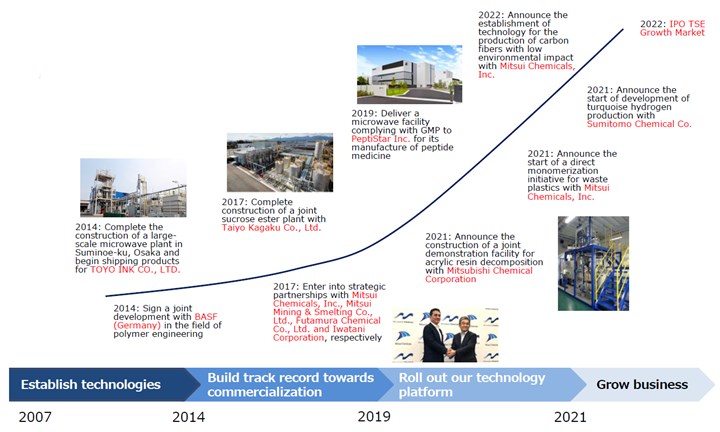



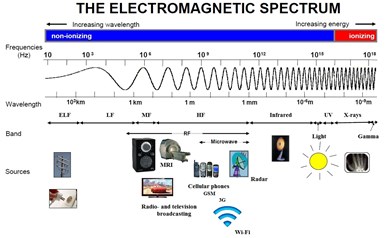

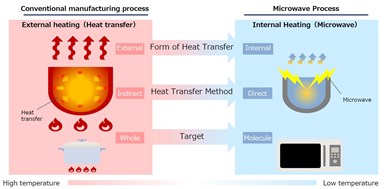



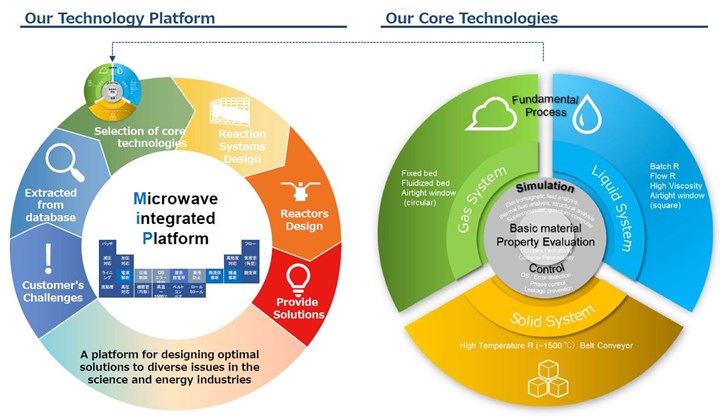
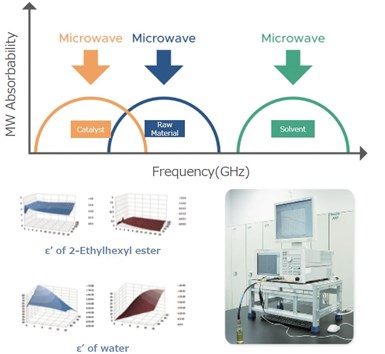
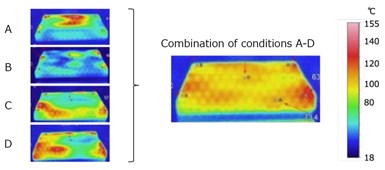
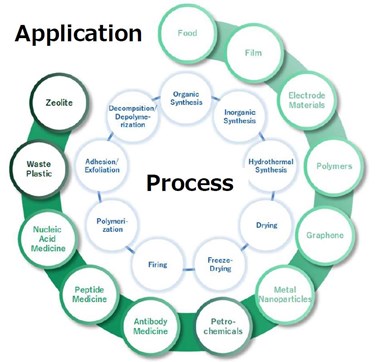







.jpg;maxWidth=300;quality=90)









